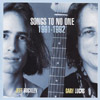 Many were devastated by the untimely loss of Jeff Buckley to a drowning accident in Memphis in May 1997. Not only had such an outstanding vocalist, musician and songwriter, who spoke to so many with his music, met a premature death, but he had made such an impact with only one studio album to his name.
Many were devastated by the untimely loss of Jeff Buckley to a drowning accident in Memphis in May 1997. Not only had such an outstanding vocalist, musician and songwriter, who spoke to so many with his music, met a premature death, but he had made such an impact with only one studio album to his name.
Kranky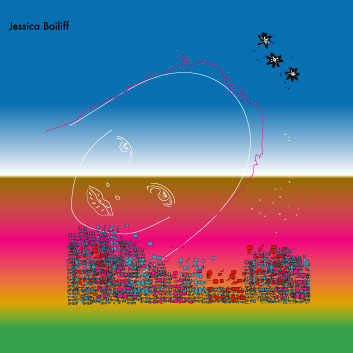 After two impressive albums recorded with Alan and Mimi of Low, Jessicacomes home with her third album —recorded at home with Jesse Edwards,her bandmate in Red Morning Chorus and Northern Song Dynasty. Therecord has a much more intimate feel than any she's recorded, with aneye towards more acoustic arrangements and a bit more experimentation.Everything sounds sparse or barren, far more than other releases have,like there's a stark loneliness or quiet that is being explored on eachtrack. Often times it all sounds brittle, even, as it feels like ifthese songs are pushed like she has in the past, emitting any noisethat is too harsh, it will all come crashing down. Bailiff's voice isas assured and sultry as ever, and the treatments on a few tracks evenelevate it, making it sound firmly otherworldly. All these ingredientsmake for her most engaging release yet. "Swallowed" is classic Bailiff:steady rhythm with small flourishes and the desperate call of "If onlyyou'd hold me and say it's all right." "Hour of the Traces," with theviolin-uke melody and percussion that sounds like taps on an acousticguitar, is hauntingly pure and pained, even as a happy tin whistle,faded in the mix, plays along. Finally, on "Disappear," the roar comesin and the volume increases and the guitar distorts seemingly intooblivion with computer voice back-up to hold it all in. The albumcloses with the piano-based "The Thief," a lamenting chorus of voicessinging behind Bailiff as the song progresses. It's a gorgeous moment,where I felt Bailiff stepping out of herself.
After two impressive albums recorded with Alan and Mimi of Low, Jessicacomes home with her third album —recorded at home with Jesse Edwards,her bandmate in Red Morning Chorus and Northern Song Dynasty. Therecord has a much more intimate feel than any she's recorded, with aneye towards more acoustic arrangements and a bit more experimentation.Everything sounds sparse or barren, far more than other releases have,like there's a stark loneliness or quiet that is being explored on eachtrack. Often times it all sounds brittle, even, as it feels like ifthese songs are pushed like she has in the past, emitting any noisethat is too harsh, it will all come crashing down. Bailiff's voice isas assured and sultry as ever, and the treatments on a few tracks evenelevate it, making it sound firmly otherworldly. All these ingredientsmake for her most engaging release yet. "Swallowed" is classic Bailiff:steady rhythm with small flourishes and the desperate call of "If onlyyou'd hold me and say it's all right." "Hour of the Traces," with theviolin-uke melody and percussion that sounds like taps on an acousticguitar, is hauntingly pure and pained, even as a happy tin whistle,faded in the mix, plays along. Finally, on "Disappear," the roar comesin and the volume increases and the guitar distorts seemingly intooblivion with computer voice back-up to hold it all in. The albumcloses with the piano-based "The Thief," a lamenting chorus of voicessinging behind Bailiff as the song progresses. It's a gorgeous moment,where I felt Bailiff stepping out of herself.
samples:
Ninja Tune The fourth release from Amon Tobin, under his own name, once againtends to lead more in the direction of last year's 'Supermodified' inthat the use of a lot of those "go cat, go!" drum licks and uprightbass samples have been eschewed in favour of some heavier groove-stylednumbers, with the odd drum 'n bass licks thrown in for good measure.The frenetic "Back From Space" kicks the disc into high gear with itsbusy rhythmic layers, compressed bass lines and monster low-end synthpatterns that leave fingerprints all over the scene. The solid "Verbal"has enough of a pop element to come close to getting airplay on majordance radio (if it hasn't already), thanks in part to it's strummyacoustic guitars, pumping bass and the cut 'n paste vocals provided byMC Decimal R. The stand out, "Hey Blondie," is a great, spacy bed ofsynths, subtle 70s bass lines and arpeggiated guitar held together witha deep pocket, down-tempo groove that's a mile wide. Who sayselectronic music has no feel? "Cosmo Retro Intro Outro" builds fromprocessed funk guitar squelches and fleeting melodic synth lines tosome heavy drum 'n bass-styled rhythms which blend perfectly with thebackdrop. "Triple Science" will have your ears doing pinwheels with itsuptempo barrage of bips and bleeps, held together by a half-time bassline that sounds like an upright being whacked with a stick. Theremainder of the disc's eleven tracks tends to be a lot more grooveoriented, making for some great space and choices of sounds in thecompositions.
The fourth release from Amon Tobin, under his own name, once againtends to lead more in the direction of last year's 'Supermodified' inthat the use of a lot of those "go cat, go!" drum licks and uprightbass samples have been eschewed in favour of some heavier groove-stylednumbers, with the odd drum 'n bass licks thrown in for good measure.The frenetic "Back From Space" kicks the disc into high gear with itsbusy rhythmic layers, compressed bass lines and monster low-end synthpatterns that leave fingerprints all over the scene. The solid "Verbal"has enough of a pop element to come close to getting airplay on majordance radio (if it hasn't already), thanks in part to it's strummyacoustic guitars, pumping bass and the cut 'n paste vocals provided byMC Decimal R. The stand out, "Hey Blondie," is a great, spacy bed ofsynths, subtle 70s bass lines and arpeggiated guitar held together witha deep pocket, down-tempo groove that's a mile wide. Who sayselectronic music has no feel? "Cosmo Retro Intro Outro" builds fromprocessed funk guitar squelches and fleeting melodic synth lines tosome heavy drum 'n bass-styled rhythms which blend perfectly with thebackdrop. "Triple Science" will have your ears doing pinwheels with itsuptempo barrage of bips and bleeps, held together by a half-time bassline that sounds like an upright being whacked with a stick. Theremainder of the disc's eleven tracks tends to be a lot more grooveoriented, making for some great space and choices of sounds in thecompositions.
samples:
Tiger Style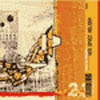 This reissue of Marc Bianchi's 1997 vinyl-only release documents avastly different Her Space Holiday from the warm, symphonic, electronicpop of last year's 'Manic Expressive'. The six tracks present thatappeared on the original (the reissue includes six unreleased bonustracks) evoke both the psychedelic, spacious atmospherics of FlyingSaucer Attack, the ethereal twang of Mojave 3, and the shy vocals andsimple, introspective guitar melodies of Trembling Blue Stars.Furthermore, "Gravity Fails Us" sounds downright Stereolab-esque in itsfirst 60 seconds. These songs have a relaxed expansiveness thatcontrasts with the tight, meticulously constructed material for whichHSH is presently known. The six bonus tracks, while in the same vein asthe aforementioned, are less noteworthy. Terse and underdeveloped, it'sclear why these songs, presumably recorded around the same time asthose which comprised the 'Audio Astronomy' in its LP version, wereinitially not included. In fact, for this reissue, they seem less likea "bonus" and more like tacked-on filler material. Nevertheless,Bianchi, who seems to hold the highest appreciation for his listeningaudience, no doubt added the previously unreleased songs for theirenjoyment rather than as a sales ploy.
This reissue of Marc Bianchi's 1997 vinyl-only release documents avastly different Her Space Holiday from the warm, symphonic, electronicpop of last year's 'Manic Expressive'. The six tracks present thatappeared on the original (the reissue includes six unreleased bonustracks) evoke both the psychedelic, spacious atmospherics of FlyingSaucer Attack, the ethereal twang of Mojave 3, and the shy vocals andsimple, introspective guitar melodies of Trembling Blue Stars.Furthermore, "Gravity Fails Us" sounds downright Stereolab-esque in itsfirst 60 seconds. These songs have a relaxed expansiveness thatcontrasts with the tight, meticulously constructed material for whichHSH is presently known. The six bonus tracks, while in the same vein asthe aforementioned, are less noteworthy. Terse and underdeveloped, it'sclear why these songs, presumably recorded around the same time asthose which comprised the 'Audio Astronomy' in its LP version, wereinitially not included. In fact, for this reissue, they seem less likea "bonus" and more like tacked-on filler material. Nevertheless,Bianchi, who seems to hold the highest appreciation for his listeningaudience, no doubt added the previously unreleased songs for theirenjoyment rather than as a sales ploy.
Despite the drastic change in sound over the past 5 years, fans will nodoubt find 'Audio Astronomy' an interesting document in the evolutionof Her Spaace Holiday.
samples:
Tigerbeat6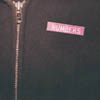 Numbers might not be an electronic laptop band, but like nearlyeverything else on the TB6 label, it is fun, addictive, silly, andsickingly dancable. This trio of youngsters from the Bay Area consistof a Moog player, guitarist and a front-stage drummer who controls theworld. (All of which who sing.) While I'll be the first to admit Ididn't really get this band entirely on record, after seeing them liveI have been completely won over. Subsequently, the album sounds muchbetter now. Clocking in at just over 19 minutes, this ten-song recordhas got to be one of the most genuine releases of the year. The bandaddresses adult issues through the mind of a child, as the subjectmatter ranges from materialistic greed ("We Like Having Things") totechnology ("Intercom") and strained intrapersonal relations ("Too Coolto Say Hi"). The disjunct playing and off-tunings of the guitarseparate the group from the typical post-punk punks, almost as if threecomputer nerds were handed rock instruments and trained long and hardto play louder, faster, and more original than the bullies down thestreet. Training and practice payed off as the good kids did win thistime. Let's see how they do in the sequel.
Numbers might not be an electronic laptop band, but like nearlyeverything else on the TB6 label, it is fun, addictive, silly, andsickingly dancable. This trio of youngsters from the Bay Area consistof a Moog player, guitarist and a front-stage drummer who controls theworld. (All of which who sing.) While I'll be the first to admit Ididn't really get this band entirely on record, after seeing them liveI have been completely won over. Subsequently, the album sounds muchbetter now. Clocking in at just over 19 minutes, this ten-song recordhas got to be one of the most genuine releases of the year. The bandaddresses adult issues through the mind of a child, as the subjectmatter ranges from materialistic greed ("We Like Having Things") totechnology ("Intercom") and strained intrapersonal relations ("Too Coolto Say Hi"). The disjunct playing and off-tunings of the guitarseparate the group from the typical post-punk punks, almost as if threecomputer nerds were handed rock instruments and trained long and hardto play louder, faster, and more original than the bullies down thestreet. Training and practice payed off as the good kids did win thistime. Let's see how they do in the sequel.
samples:
Intransitive Recordings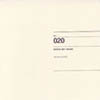 CDs like this make me smile because they have dual uses: 1) listeningenjoyment and 2) annoying the hell out of a captive audience. I imaginepopping this one on full blast for a car full of guests while zippingalong the freeway at 80 mph. No escape. Nerve Net Noise is a Japanesesynth duo that set their homemade synths to autopilot and record theunexpected results. This album's focus is on rhythmic percussionpercussive clicks and chirps, almost like a pared-down Pan Sonic sansthe Finnish Stoicism. Japanese culture is fascinated with all thingscute, and I imagine the wheezy squeaks on "#3" being a cheery cartoonbird laughing at your erratic heartbeat. "#5" sounds like someonerapidfire plugging/unplugging one of those chirping Christmasornaments. "Long Mail to Boston" is an overloaded car horn blast. Whilethis is a trying record for those with short attention spans, it's justthe trick for those of you who incessantly drum on anything and pick uprhythms from refrigerator buzzes and passing trains. NNN go a littlefar to claim that this is a "new kind of pop music," but some of itindeed is catchy. Not the kind of thing you could hum though—the heavyclicks are of the brain function interruption variety.
CDs like this make me smile because they have dual uses: 1) listeningenjoyment and 2) annoying the hell out of a captive audience. I imaginepopping this one on full blast for a car full of guests while zippingalong the freeway at 80 mph. No escape. Nerve Net Noise is a Japanesesynth duo that set their homemade synths to autopilot and record theunexpected results. This album's focus is on rhythmic percussionpercussive clicks and chirps, almost like a pared-down Pan Sonic sansthe Finnish Stoicism. Japanese culture is fascinated with all thingscute, and I imagine the wheezy squeaks on "#3" being a cheery cartoonbird laughing at your erratic heartbeat. "#5" sounds like someonerapidfire plugging/unplugging one of those chirping Christmasornaments. "Long Mail to Boston" is an overloaded car horn blast. Whilethis is a trying record for those with short attention spans, it's justthe trick for those of you who incessantly drum on anything and pick uprhythms from refrigerator buzzes and passing trains. NNN go a littlefar to claim that this is a "new kind of pop music," but some of itindeed is catchy. Not the kind of thing you could hum though—the heavyclicks are of the brain function interruption variety.
samples:
Hymen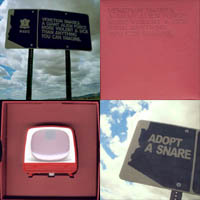 Rumours that Aaron Funk has four albums coming out on the same day in2003 are no more than rumours, but the Canadian's work-rate is soimpressive that the claim is actually plausible. After two superbfull-lengths this year on Planet Mu, and a third, 'Winter In The BellyOf A Snake,' held back despite being pressed and available in October(as if to save others embarrassment) it seems natural that he wouldsneak out another release somehow, and this time it's an elaborate boxset on Hymen. The red box contains a 3" CD with a single track, as wellas a small TV-shaped slide viewer, with 8 slides inside. Each slide hasthe title of the box PhotoShopped onto some object. Fans will revel inthis entirely reasonable claim being splattered all over road signs,vending machines, and other items. As for the music, as usual Funkexplores the limits of his self-discovered blend of breakcore andcut-up drum'n'bass. Here, he takes the opportunity to create anextended piece rather than move chaotically between different musicalparts, and develops a harsh break and distorted bassline over 16minutes, leading inevitably to a mental, blurred climax. No-one istaking intensely programmed breaks further.
Rumours that Aaron Funk has four albums coming out on the same day in2003 are no more than rumours, but the Canadian's work-rate is soimpressive that the claim is actually plausible. After two superbfull-lengths this year on Planet Mu, and a third, 'Winter In The BellyOf A Snake,' held back despite being pressed and available in October(as if to save others embarrassment) it seems natural that he wouldsneak out another release somehow, and this time it's an elaborate boxset on Hymen. The red box contains a 3" CD with a single track, as wellas a small TV-shaped slide viewer, with 8 slides inside. Each slide hasthe title of the box PhotoShopped onto some object. Fans will revel inthis entirely reasonable claim being splattered all over road signs,vending machines, and other items. As for the music, as usual Funkexplores the limits of his self-discovered blend of breakcore andcut-up drum'n'bass. Here, he takes the opportunity to create anextended piece rather than move chaotically between different musicalparts, and develops a harsh break and distorted bassline over 16minutes, leading inevitably to a mental, blurred climax. No-one istaking intensely programmed breaks further.
samples:
23five This compilation, released to accompany an SFMOMA exhibit, collectseleven tracks from Australian experimental musicians. There's anexcellent sense of unity, as most of the compositions are aestheticallysimilar, at least superficially, in their emphasis on sparse,laptop-driven presentations. Some rely on organic instruments andothers on homebuilt electronics, but all of them find creative soundsand work really well, making this album quite consistent.
This compilation, released to accompany an SFMOMA exhibit, collectseleven tracks from Australian experimental musicians. There's anexcellent sense of unity, as most of the compositions are aestheticallysimilar, at least superficially, in their emphasis on sparse,laptop-driven presentations. Some rely on organic instruments andothers on homebuilt electronics, but all of them find creative soundsand work really well, making this album quite consistent.
Worth mentioning are the extremely lucid liner notes by PhilipSamartzis and Csaba Toth, which provide a reductionist breakdown ofimprovised and noise music; it sheds some light on the undercurrents,although nothing on the compilation fits clearly into their categories.
Jim Knox provides the most noise, in the form of three short pieceswhich range from an eerie metallic drone to a harsh, radio-influencednoise collage. Most tracks on this disc have some incredible sounds andtechniques. Delire's track is a flowing medley of intermittent sci-fisounds occasionally riding on an electro rhythm that keeps fallingapart; then things get a bit nostalgic as he incorporates someobfuscated videogame-type tones into the mix, along with some crunchyphased static.
My favorite piece is David Brown's "Were Holes Mended?", a duet ofprepared guitar and squeaking door. The guitar cliches are in effect:the high gain power chords, the pick slides, and the Derek Baileyimitations; but it flows seamlessly, as the creaking door morphs intostrange horn-like tones and the processed guitar provides a dazzlingarray of counterpoint sounds (in what could be all the Powerbookcliches). Robbie Avenaim's "Impulse Control Disorder" also takes theDSP improv route, mixing high tones, beeps and FM bells, and thewhistle of steam with the clatter of thin, trash-can percussion. It hasa great sense of progression. Philip Samartzis' piece, "Soft And Loud,"is an exercise in interruption; a train approaches and then somefractured music starts, only to suddenly disappear leaving only thewind. This general idea is repeated several times, using environmental,mechanical, and digital sounds to represent these two extremes. Ireally like the "soft" parts of the track; there are some beautifulfield recordings and gentle buzzing drones, but it's only fitting thatthese moments of peace are transitory. 'Variable Resistance' hasintroduced me to some innovative new artists, and like its relative'Ju-Jikan,' is definitely a worthwhile collection.
samples:
- Robbie Avenaim - Impulse Control Disorder
- David Brown - Were Holes Mended?
- Jim Knox - Fuck To Mandatory Detention
23five This two-disc compilation coincides with last year's SFMOMA exhibit ofthe same name, a "listening event documenting the past 18 years ofJapanese experimental music," though this recording features mostlyelectronic-oriented material from the past few years. Despite this, itsbreadth is exceptional and some of the tracks are unreleased, so it'sexcellent both for collectors or as an introduction.
This two-disc compilation coincides with last year's SFMOMA exhibit ofthe same name, a "listening event documenting the past 18 years ofJapanese experimental music," though this recording features mostlyelectronic-oriented material from the past few years. Despite this, itsbreadth is exceptional and some of the tracks are unreleased, so it'sexcellent both for collectors or as an introduction.
Noise, of course, is a focal point, and each of the several noisepieces are quite distinct—Pain Jerk's track is a rumbling, rhythmicassault in contrast to Masonna's brighter vocal and synth-drivenfreakout. The Otomo Yoshihide track, consisting only of high frequencyguitar feedback, is easily the toughest; he exploits the subtleinteraction of two tonally pure sustained notes, holding them foruncomfortable lengths of time. It's interesting and challenging but Iprefer his more dynamic work.
Other tracks range from minimalist-inspired rhythmic clicks, such asthe Nerve Net Noise, Atau Tanaka, and Ryoji Ikeda tracks, which allmanage to distinguish themselves with their detailed but disarminglysimple tonal palettes, to more abstract, juxtaposed medleys. MasahiroMiwa's contribution uses plaintive low-fi synths to establish tension;though the sounds are light and playful, the overall feel is heavy andworks well with his stated topic of youth violence in Japan. I likeI.d.'s supposedly "hacker"-inspired piece. Its discrete bundles ofstatic and waves of digital noise sound almost like information, and itslowly develops into something vaguely repetitive and structured.
The compilation also features a few notable older but forward-lookingpieces. Yasunao Tone's track is about contrasts: beauty and ugliness aswell as ancient and modern, combining gorgeous flute playing and anoisy synth that sounds like the creaking of a door. The music stopsperiodically for an NPR-type voice to read some semi-decent poetry;although the track is long and generally simple, it's still engagingand I love the flute playing.
The Kazuo Uehara composition, dating back to 1988, has the mostimpressive sounds on the disc. It begins with some quiet, indeterminateevents and some mumbled French with a cavernous echo, and the vocalsgrow increasingly processed and alien. Stunning woodwind-like dronesbuild towards an organ-like range and later into hauntingly serenehowling and whistling. The ground that this compilation covers, as awhole, is amazing, and it definitely reaffirms the brilliance ofJapanese musical innovation.
samples:
- Otomo Yoshihide - Composition For Two Guitars
- I.d. - Oo.>>..>>..Bt
- Masahiro Miwa - Alleleuia
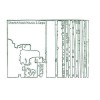 This compilation of artists on SharkAttack! features some extremely talented bands playing some incredibly strong material. Charlene, whose members started SharkAttack!, contribute four tracks, HelloAttack give two, and Compass and Lockgroove three each.
This compilation of artists on SharkAttack! features some extremely talented bands playing some incredibly strong material. Charlene, whose members started SharkAttack!, contribute four tracks, HelloAttack give two, and Compass and Lockgroove three each.



